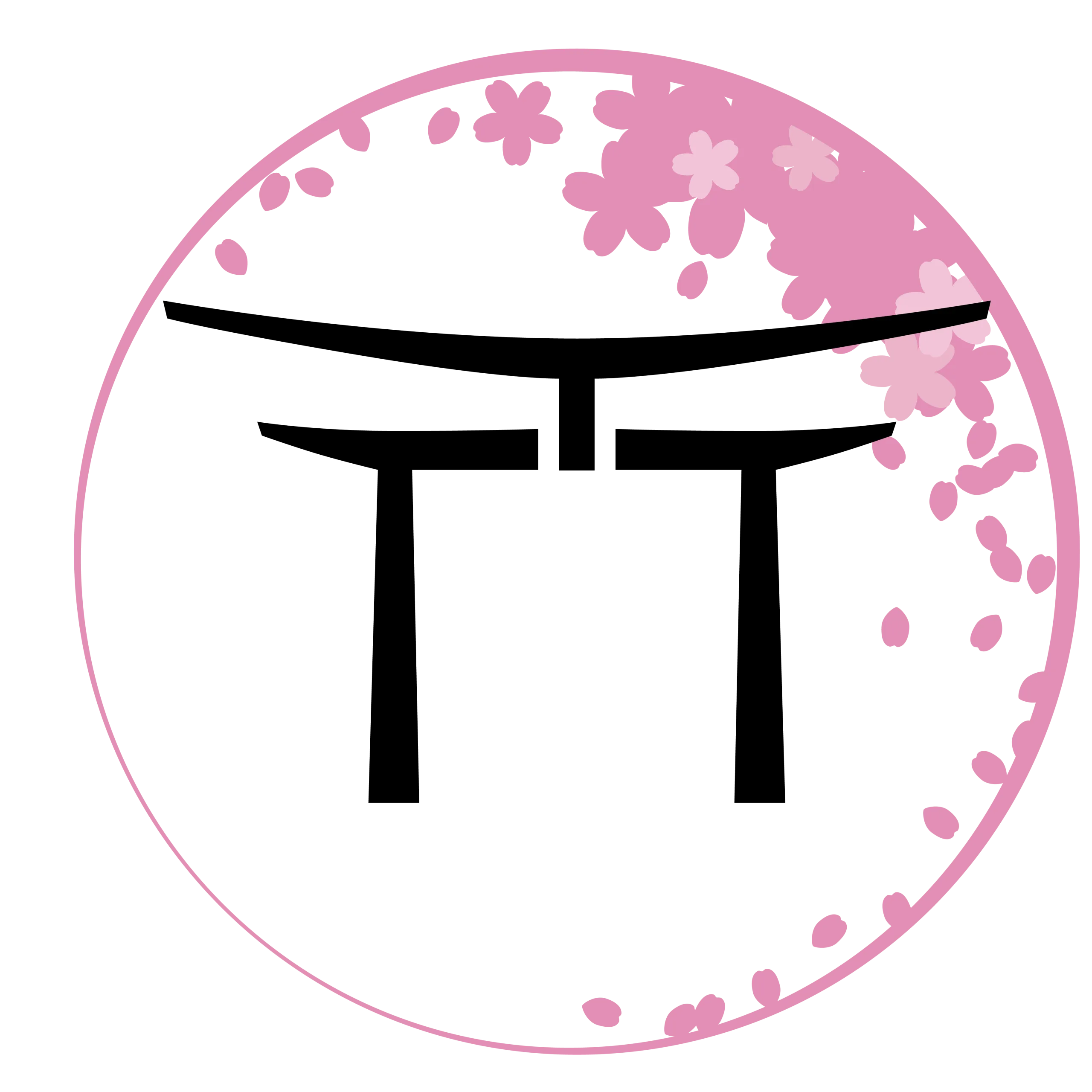Jichinsai (地鎮祭): A Shinto Ceremony for Building a House in Japan
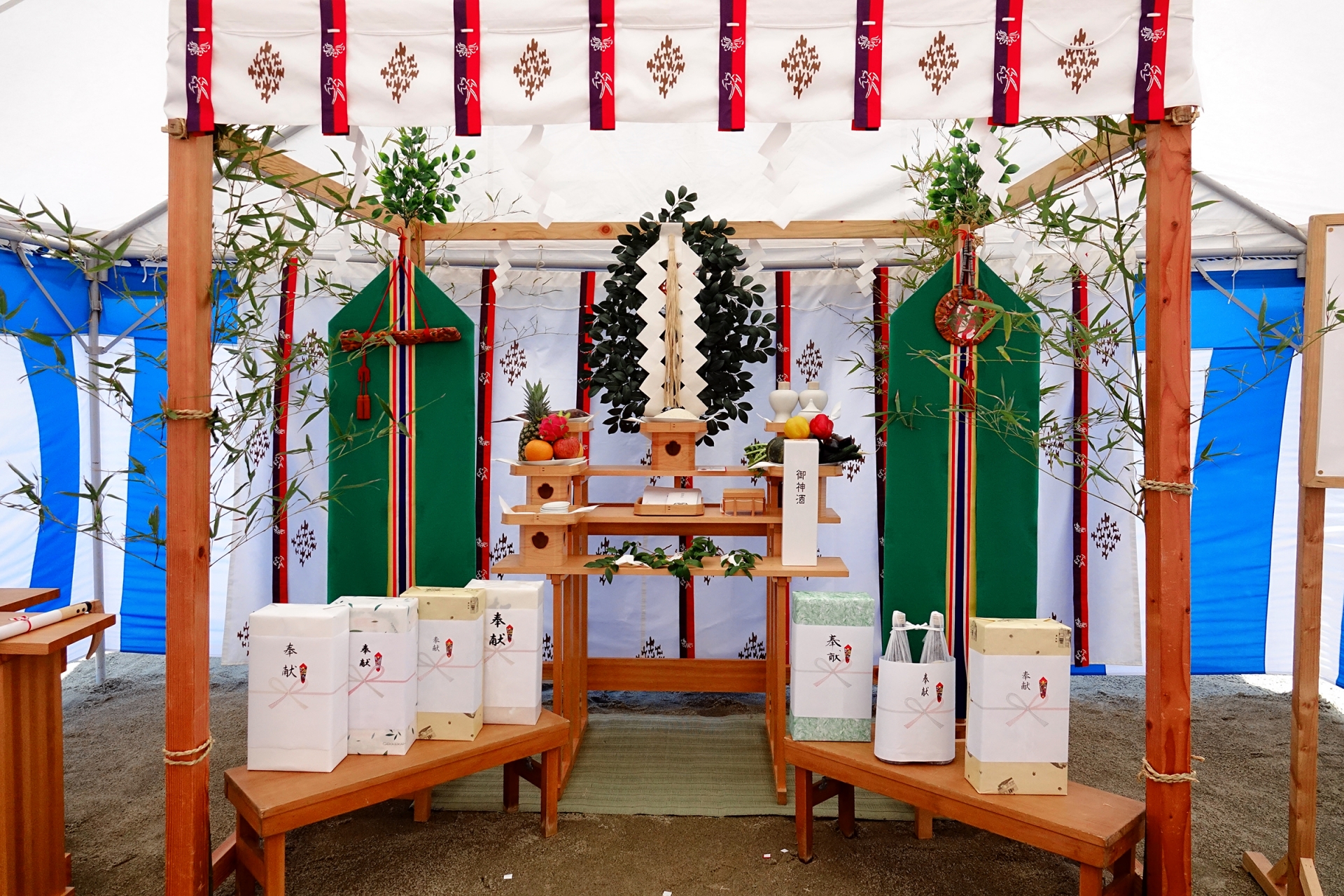
Last Updated on November 27, 2025 by Kay
This post may contain affiliate links, meaning I may earn a small commission on any purchases through those links at zero additional cost to you. Whatever I make goes to keeping this website running and I am forever grateful for the support. See my Privacy Policy for more information.
It’s been a while since my last post about building a house in Japan! We’re almost finished with the designing stage and construction will start next month (!) so we had our Jichinsai (地鎮祭) on Christmas day.
Table of Contents
What is a Jichinsai?
Jichinsai is a Shinto groundbreaking ceremony to purify and bless the land to ensure that construction goes smoothly and to ask the Shinto gods to protect a future home and ensure the happiness of the owners. There’s the belief that each plot of land has its own god who will protect the land and ensure its safety if called.
This is held for not only homes but also for other types of buildings as well. My husband and brother-in-law, who both attended our Jichinsai, had never been to one before but interestingly, I (the lone foreigner) had participated in a Jichinsai a few years back for my previous job, which was held prior to the construction of a new facility in Nikko, Tochigi.
As the priest explained to us, in the past Jichinsai involved first having the ceremony at the shrine before moving to the land.
However, nowadays people skip the shrine part and hold it only at the land. Thankfully a lot of traditional ways to do things have changed to become more practical and time-saving.
For instance, you know how you’re supposed to wash your hands with water at the entrance of a shrine to purify yourself? Well, in the past, you were supposed to bathe in a body of water, like the sea. (Not sure how that worked with shrines in the middle of nowhere with no river, lake, or sea in sight, but I didn’t have time to ask the priest.)
Jichinsai: What the Ceremony Entails
We hadn’t really thought about having a Jichinsai until the company building our house, Company T, asked us if we wanted to do it. The conversation basically went like this:
Company T’s architect: Do you want to have a Jichinsai before we start construction?
Husband: Sure.
We decided on an auspicious date that worked for us and Company T, and just happened to be Christmas! Company T handled everything, such as looking for a shrine that would do the ceremony and preparations.
Just in case, we looked into other shrines and their costs but the one Company T had found was the cheapest. (They’re a family-owned business that builds award-winning, structurally sound houses while remaining as affordable as possible, so I guess we shouldn’t have been surprised.)
When it came to the attendees, we invited my brother-in-law and his wife, as they live nearby. Company T employees also attended. All of us were wearing casual clothes — my brother-in-law was even in a hoodie and jeans! This was very different, although not surprising, from the Jichinsai I attended for work, where everyone was in a suit.
On the day of the ceremony, we arrived right when the priest was finishing setting up. When he was done, he explained what a Jichinsai is, how it was held in the past versus now, and explained what we were supposed to do during the ceremony.
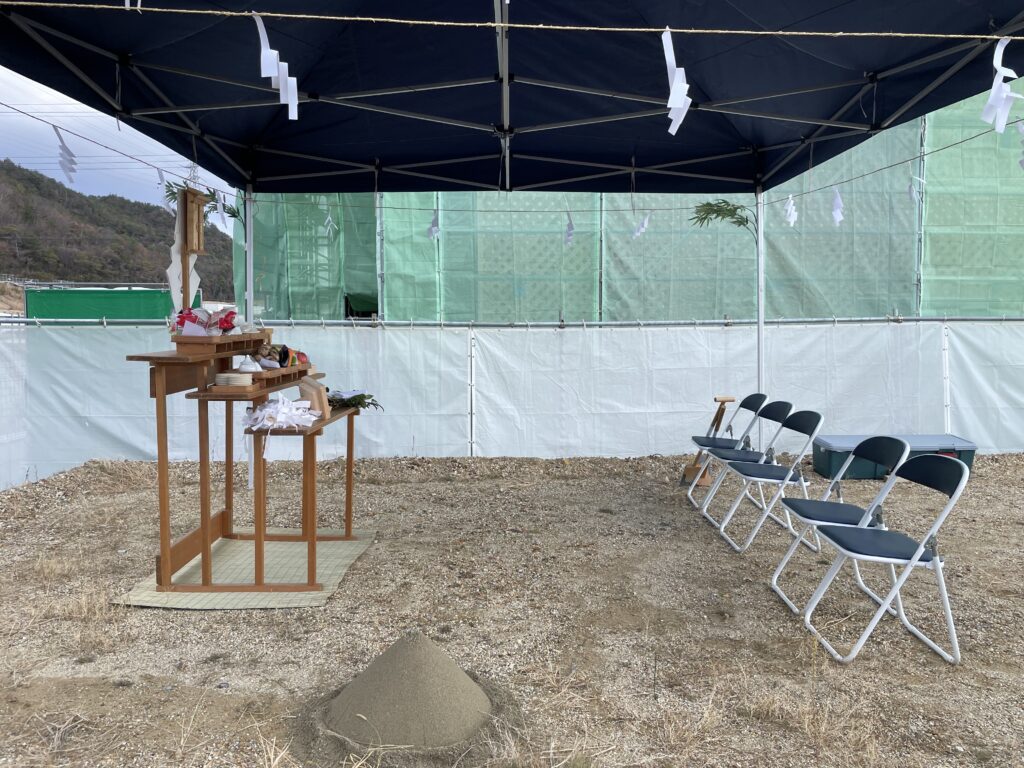
If you’ve ever attended a Shinto ceremony at a shrine, such as Omiyamairi or Shichi-go-san, then you’re likely familiar with the basics when it comes to a Shinto ceremony.
The first part was the 修祓の儀(shuubatsu no gi)in which the priest purified the altar and then us by waving an oonusa (大幣), which is a stick with many folded pieces of washi paper on it, in front of us as we bowed.
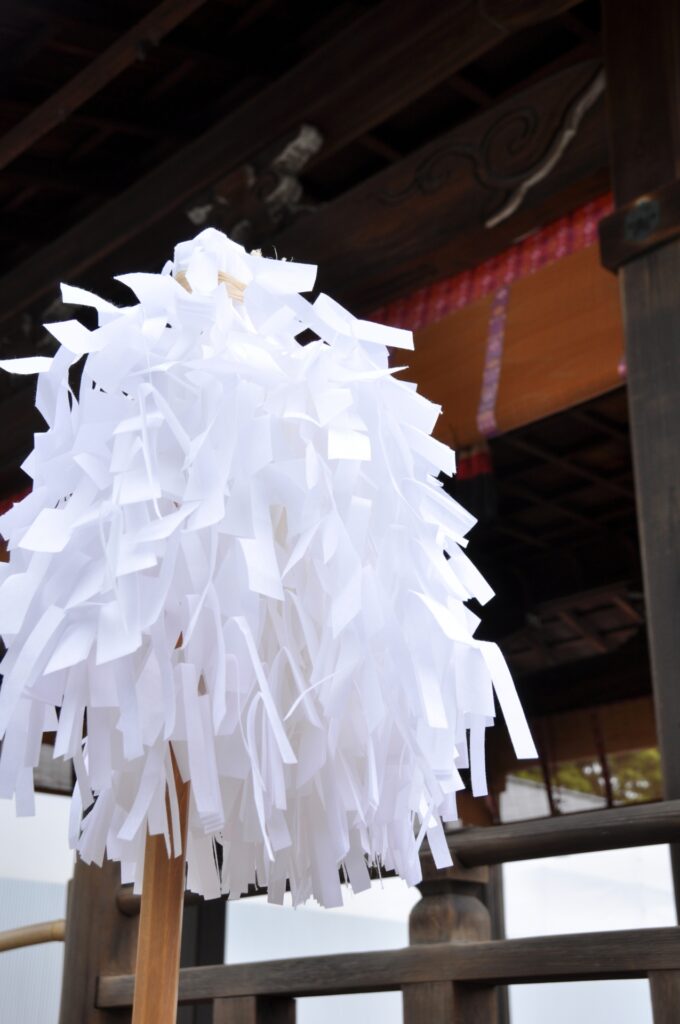
This was followed by the 降神の儀(koushin no gi) in which the priest prays and chants to call the gods and then the 献饌 (kensen) where the priest gave an offering to the gods on the alter.
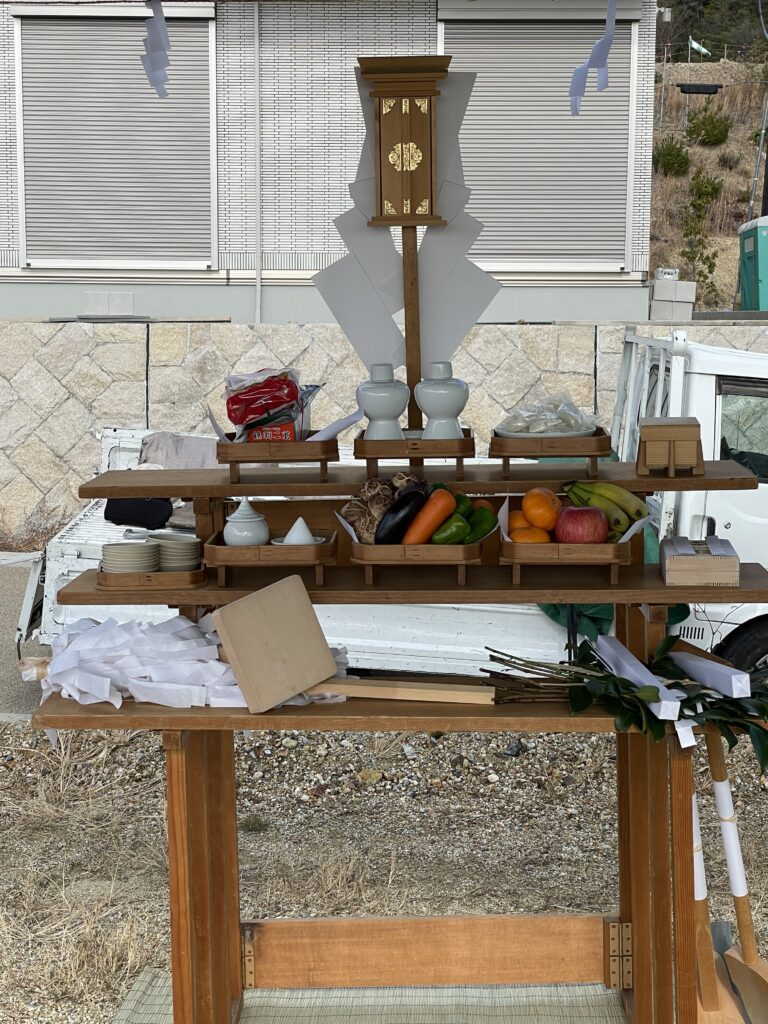
Afterward was the 祝詞奏上 (noritosoujyou), where the priest chanted a prayer to bless the land and the house (saying the name of the owner and address as well) and pray that the construction goes safely. During this tim,e we were asked to bow our heads every now and then so I couldn’t see a lot of what the priest was doing.
The priest then went to all four corners of the land and blessed each by tossing some sacred washi paper (while I secretly wondered how environmentally friendly that was). He also prayed again for the construction to go safely. This is called, perhaps unsurprisingly, 四方祓 (shouharai).
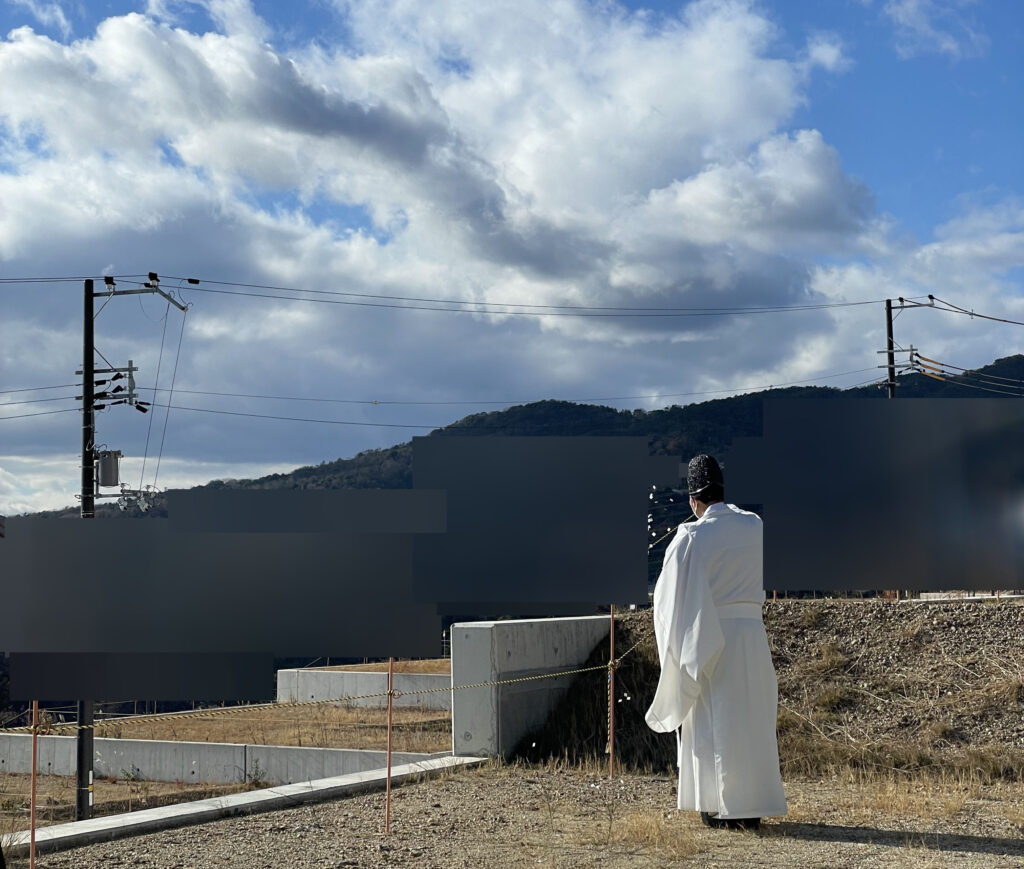
The 地鎮の儀(jinchi no gi)followed, which is a literal “ground-breaking” ceremony in which the architect “cut down” a piece of a shrub from a smooth mound of sand resembling Mount Fuji using a wooden sickle while shouting “Ei, ei, ei!”.
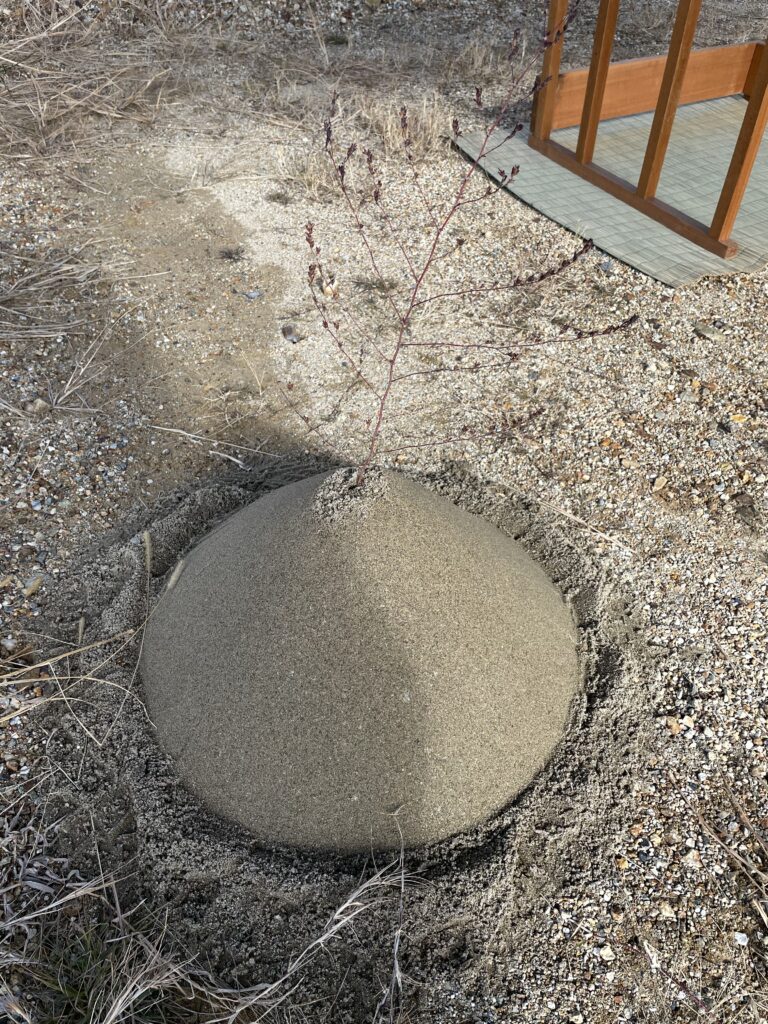
After this, my husband was given a wooden hoe, which he jabbed into the left and then the right side of the sand.
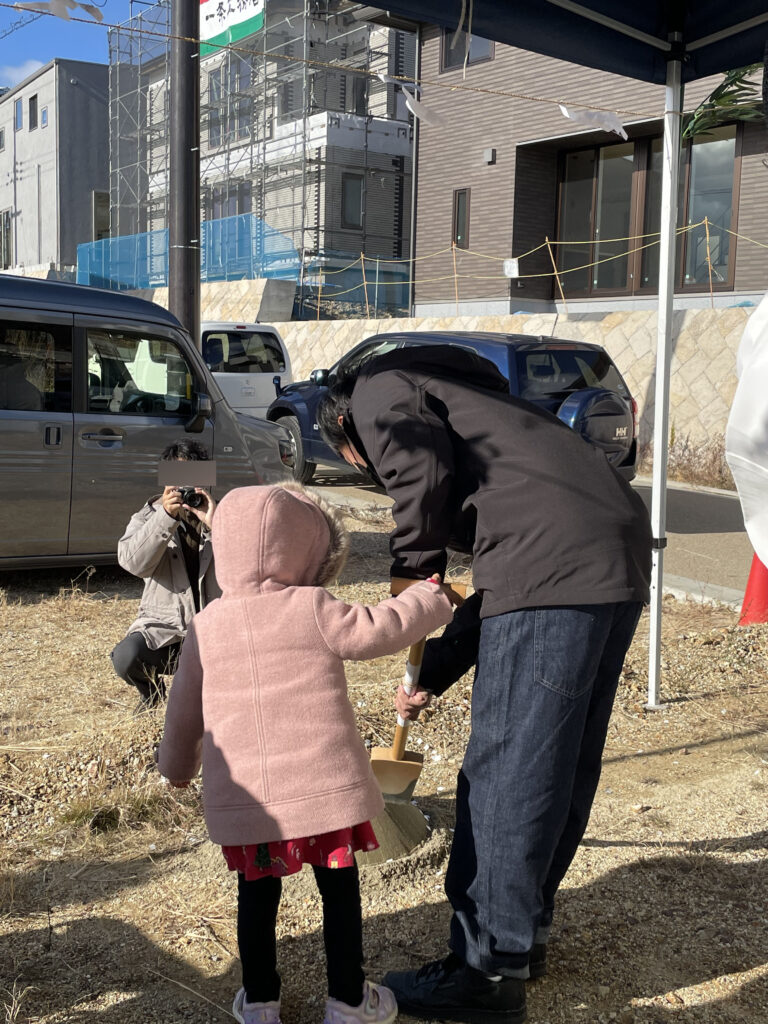
The 玉串奉奠(tamagushihouten)followed, where I, my husband, my brother-in-law, and his wife were asked to pray to the Gods for safe construction by giving them an offering called 玉串 (tamagushi). This is in the form of a folded piece of washi paper on a leafy branch of a sacred sakaki tree. As the priest explained to us, the branch is like a plate or vessel for the washi paper, which is the true offering.
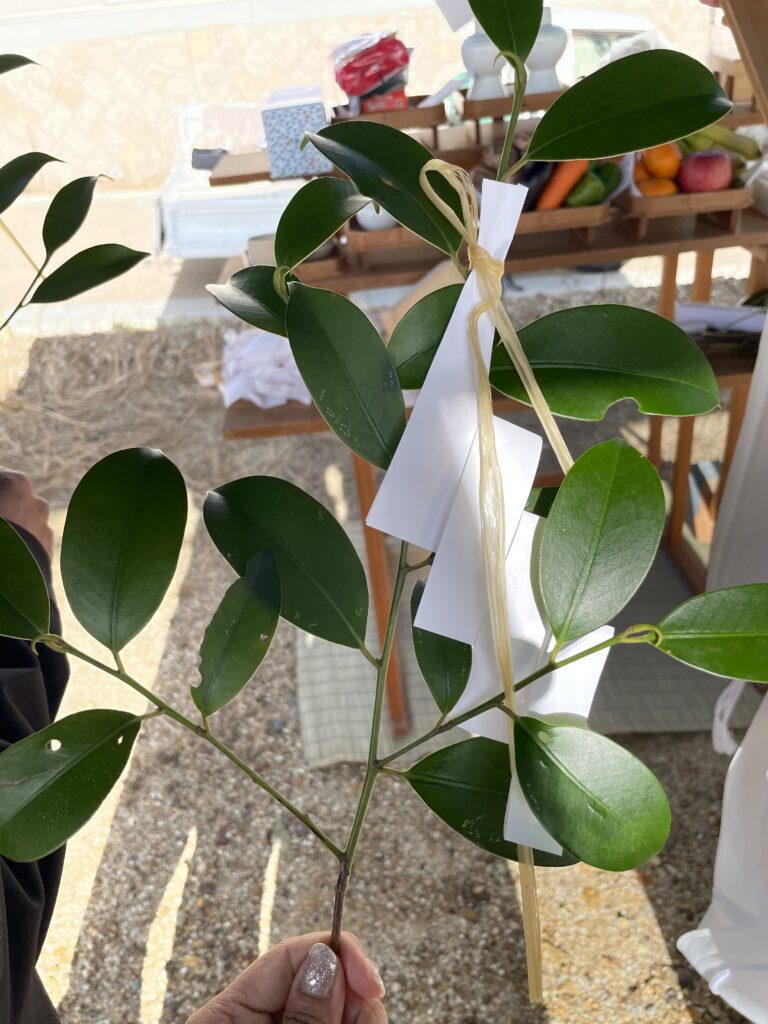
One by one, we took the tamagushi from the priest, turned it clockwise so it was upright, and then turned it clockwise again so it was upside down before placing it on the altar. Following this, we each bowed two times, clapped two times, and then bowed one more time.
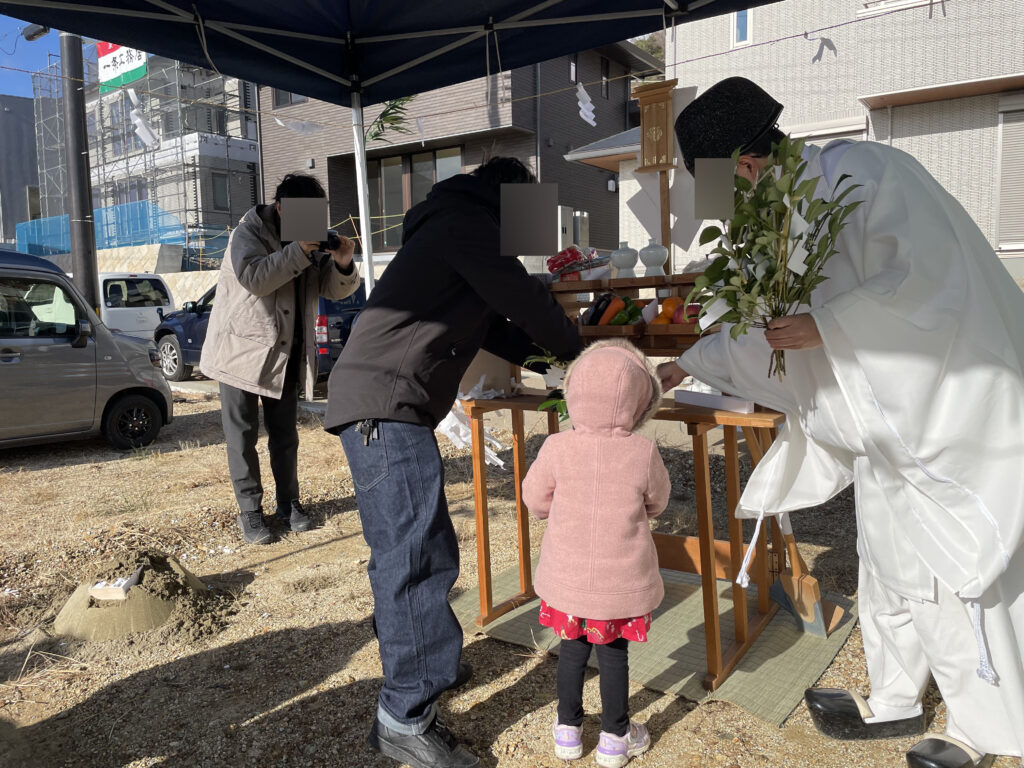
The priest then gave my husband a small bowl of rice, me a flask of sake, and a salesperson from Company T a plate of salt, which we would use to give offerings to the Gods who would protect the land, called 撤饌 (tessen).
My husband tossed some rice on the four corners of the land, from left to right on each corner, while I poured some sake and the salesperson sprinkled salt. We poured the remainder of the three onto the aforementioned little mountain of sand.
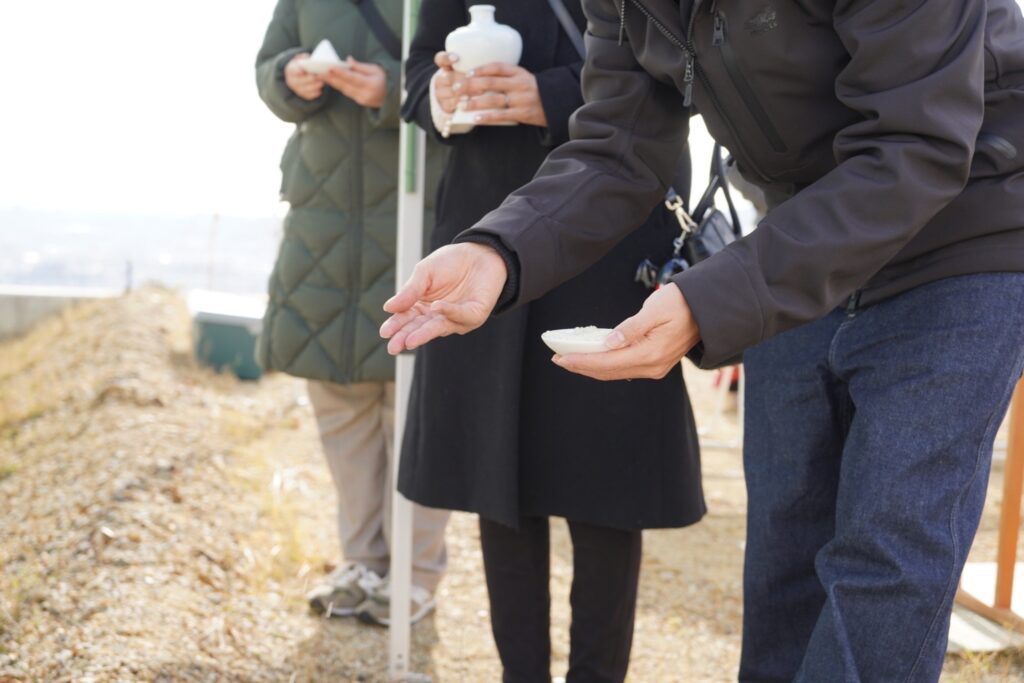
We returned to our seats and were then given a small amount of sacred sake with gold flakes in it to drink.
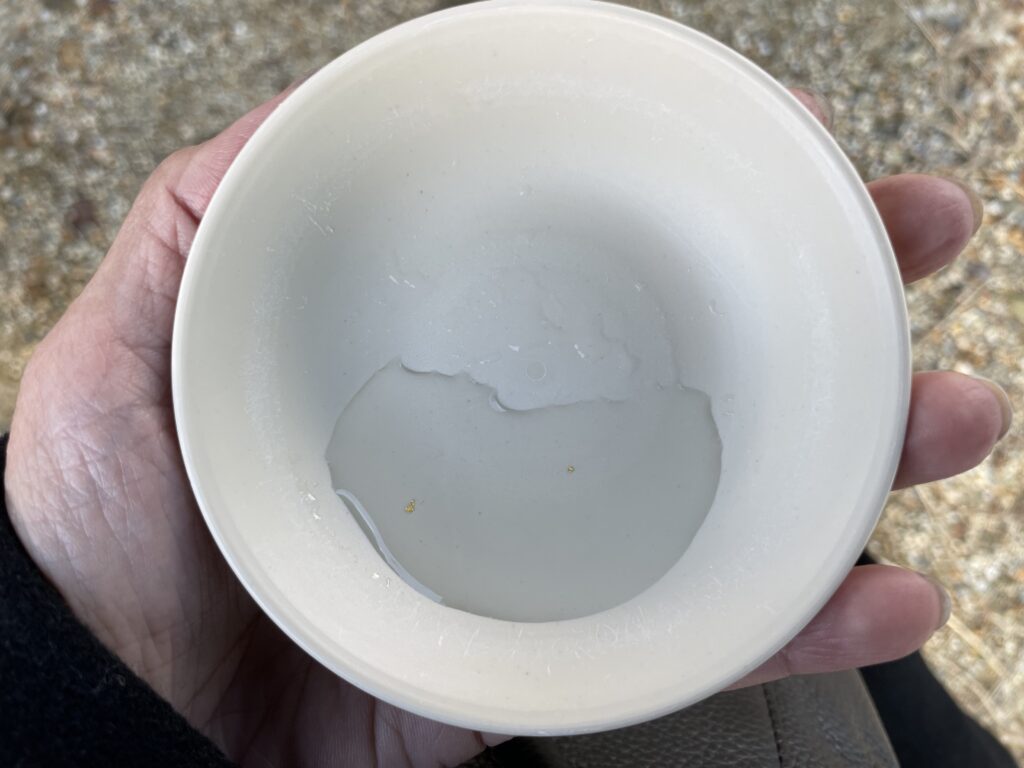
Lastly was the 昇神の儀 (shoujin no gi), where the priest sent the Gods back and then gave closing remarks before we took group photos.
And with that, the ceremony was finished. It took about one hour in total.
Later, two omamori (amulets) will be built into our home — one in the foundation and the other within the roof in order to protect the entirety of the house from the bottom to the top.
If your neighbors are already settled into their homes, this is a good chance to greet them, perhaps for the first time, and give them a small gift (which the construction company usually handles).
However, the houses are still being built in our neighborhood, so we just went straight home afterward to celebrate Christmas and enjoy the fruits and vegetables from the ceremony, which we could take home. (As well as a huge bottle of sake from Company T.)
Jichinsai Costs
Jichinsai is not a must and because of the high cost (ranging from around 30,000 to 50,000 yen for homes, sometimes more if you have to pay additional fees for the offerings), some people choose not to do it. I looked for data on this and although there were variations in the Japanese surveys I found, it seems on average at least 50% of people in Japan building homes choose to do a Jichinsai.
So why is the cost so high anyway?
There are a number of things that need to be prepared for the ceremony. For instance, offerings for the gods such as fruits and vegetables, sake, rice, and so on. In some cases, the client (or land-owner) will need to prepare these things on their own (around an additional 10,000 to 20,000 yen) but in our case, the shrine brought everything.
Company T brought a canopy tent and chairs for no additional fee so in total, we “only” had to pay 40,000 yen to the priest and nothing else.
Some people also give a monetary gift of around 10,000 yen or sweets to the house builder, which contributes to increasing the cost of the event. This isn’t mandatory, though, especially when considering you’re already paying them to build the house to begin with. We just gave Company T some chocolates that cost around 2ooo yen.
Note that when you pay the priest, it’s recommended to use a formal envelope for gifting money called a のし袋 (noshibukuro) and write 御初穂料 on the front.
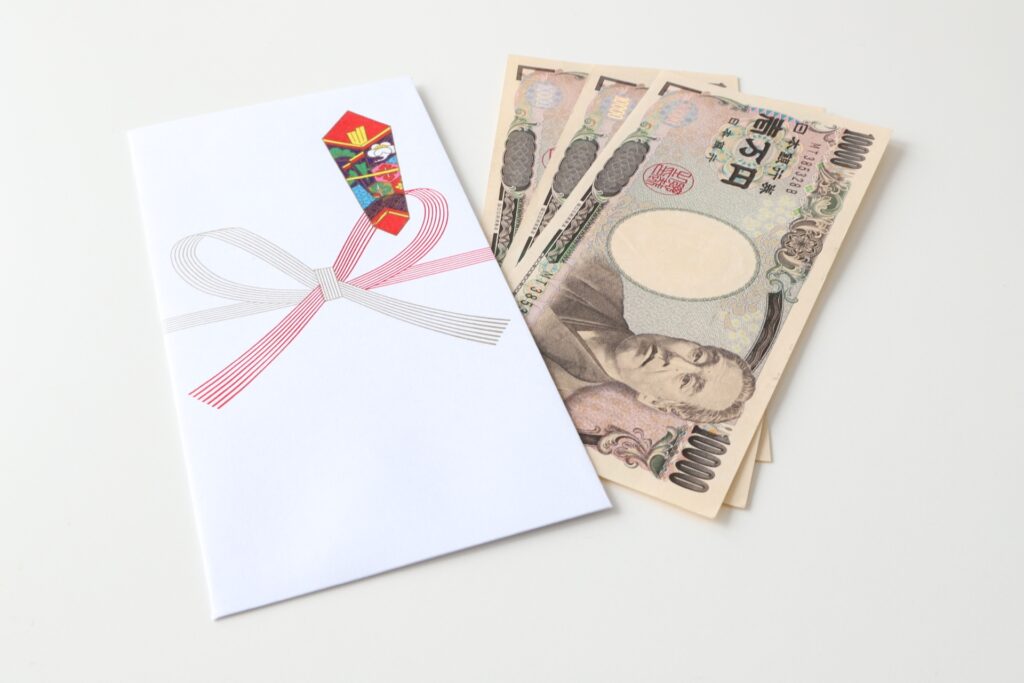
How to Prepare for a Jichinsai
As mentioned earlier, you need to bring a noshibukuro envelope to put the payment for the priest inside.
You may or may not need to bring fruit, vegetables, rice, and sake as offerings for the gods, as well as a canopy tent and chairs. Whether or not you’re responsible for this depends on your building company, so make sure to ask them in detail what you need to prepare.
Feel free to invite friends and family to your jichinsai. The construction company will also invite whoever is assisting with the house building, but if you’re contracting/hiring anyone, you can invite them as well.
As for clothes, you can wear anything you want.
If you have any neighbors, you should bring a gift for them, called soshina (粗品). This is usually something you can eat, such as high-end snacks or sweets from a department store, or something you can use, like nice towels. The construction company/builder usually handles this, including greeting the neighbors and apologizing for the upcoming construction, but make sure to ask them just in case.
Jichinsai: To Do or Not To Do
If you’re considering building a house in Japan, you may be wondering whether or not to have a Jichinsai. It’s something we waffled about ourselves after we found out the cost. However, whichever path you choose, I think you’ll be happy with your decision as not many people regret not having it, or on the other hand, having it.
We thought about the cost of the land and house in respect to the cost of the Jichinsai, and decided the Jichinsai was peanuts in comparison, especially if there is the slightest chance that there really is a spiritual world that will protect our home, so we might as well do it.
Both of our families are very superstitious as well and it made them happy that we went through with it (although my aunt commented that she only paid $100 CDN to have the house she bought blessed, but this was also over twenty years ago so who knows how much a Hindu priest in Canada would charge nowadays with record inflation).
I’m glad that we did it, if only for the memory. My daughter stood beside my husband and took part in the ceremony and she was thrilled. We have gorgeous photos that Company T took of the ceremony, and I love the fact that there will be omamori built into our house. It feels like a really good way to commemorate the beginning of our dream house’s construction and our new life in what Company T has dubbed 晴れの家 (Sunny House).
Check out my article on my thoughts about the house-building process and the finished house!

